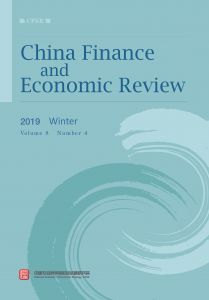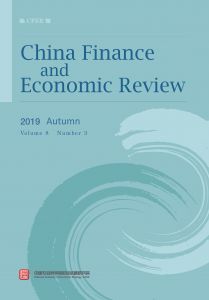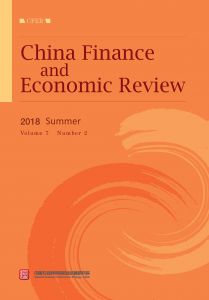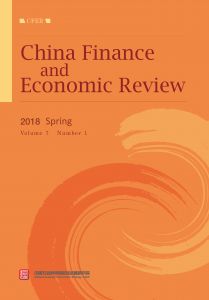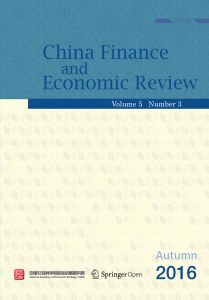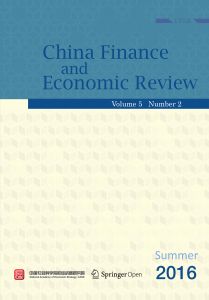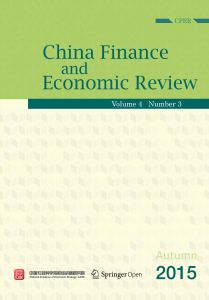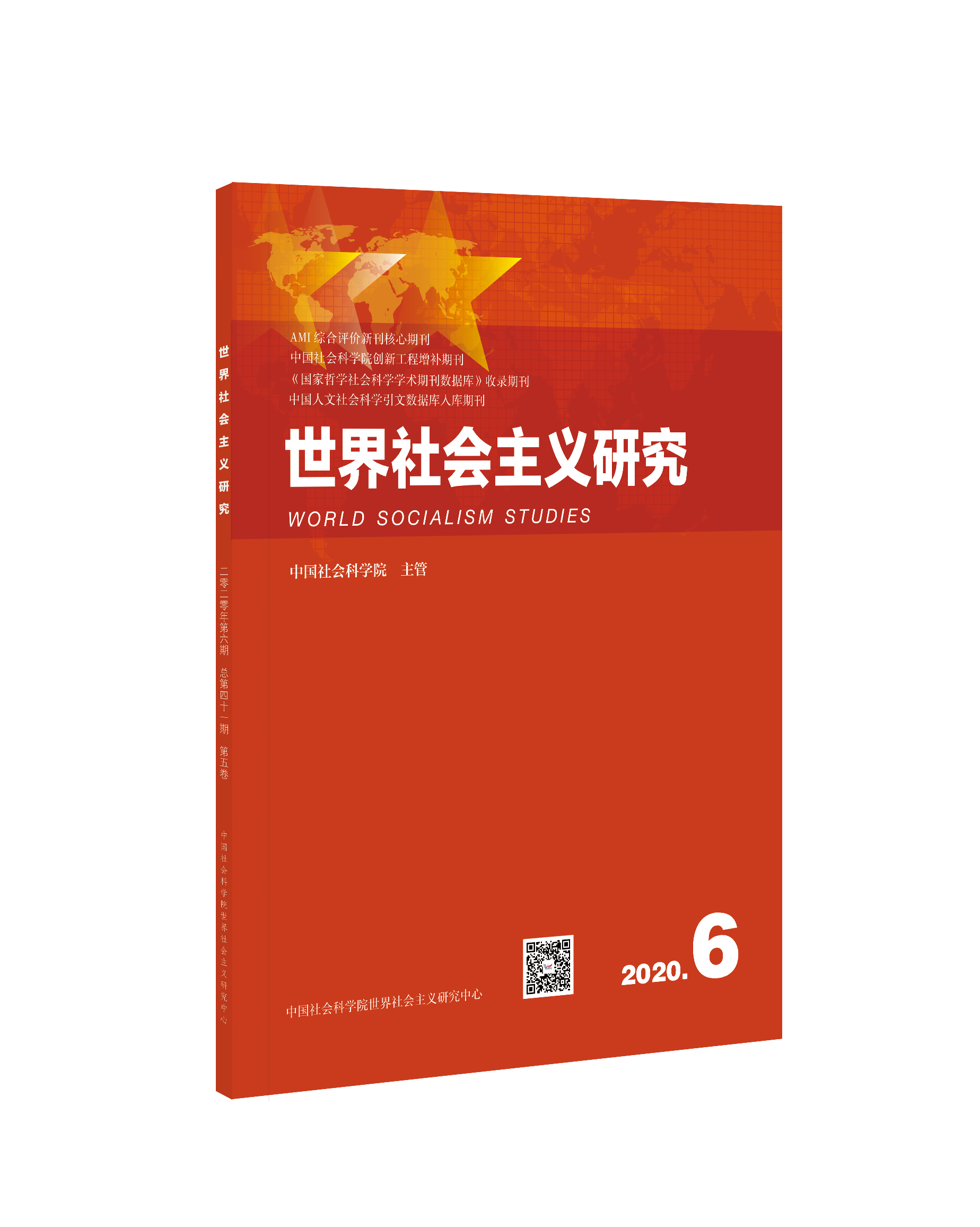最新期刊

目录
过往期刊
参考文献
-
Instructions for Authors
-
编委会
-
The choice of China’s macro-economic policies for the “new normal”
-
1. Main characteristics of the “new normal” economy
-
2. The reconstruction of economic growth serving as the engine in the “new normal”
-
3. Major risks in the “new normal” economy
-
4. The policy choices in the “new normal”
-
-
Thoughts on a comprehensive tax reform
-
1. A comprehensive, systematic understanding of tax reform
-
2. Multi-dimensional analysis to deepening tax reform
-
3. Key issues in tax reform
-
-
Intergovernmental fiscal relations: a case for division of tax power
-
1. The theoretical basis and principles for tax-sharing
-
2. The main local tax: A dilemma
-
3. The outlook for coordinated VAT and retail sales tax reform
-
4. The basic framework of tax-sharing system
-
5. Conclusions
-
-
The size and structure of China’s full-covered fiscal expenditure
-
1. Measurement method
-
2. Measurement results of the full-covered size of fiscal expenditure
-
3. Fiscal expenditure structure
-
4. Summary
-
-
On reform measures to strengthen the foundations for future economic growth in China
-
1. Introduction
-
2. Some reforms on the supply-side planned for the coming decades
-
3. A preliminary quantitative examination of the impact of the new reforms
-
4. Conclusions
-
-
Testing the applicability of Wagner’s Law in China based on reconstruction of government expenditure indicators
-
1. Introduction
-
2. Reconstruction of government expenditure indicators and measurement data
-
3. Applicability test of Wagner’s Law in China
-
4. Conclusions
-
-
The impacts of China’s economic policies on Sino-African agricultural trade: evidence from the gravity model analysis
-
1. Introduction
-
2. Methods
-
3. Results and discussion
-
4. Conclusions and policy recommendations
-
List of abbreviations used
-
-
Two decades of tax-sharing system reform in China: a comparative study
-
1. Introduction
-
2. Trends of intergovernmental fiscal relations
-
3. The proportion of tax revenue in fiscal revenue continues to decline
-
4. Deficiencies of tax structure
-
5. Three questions’ relationship
-
6. Conclusions
-
按年份浏览:
- 全部
- 2020
- 2019
- 2018
- 2017
- 2016
- 2015
- 2014
- 2013
[1][1]Cai, F., Zhang J., W. & Du, Y. et al. (2005). Population transformation and sustainability of economic growth, In Wang, L. L. (ed), Studies on China’s economic development in strategic circumstances (2005-2020) , Beijing: Social Sciences Academic Press. (In Chinese)
[2][2]Liu, S. J. (2014). The new normal growth of China’s economy. Economic Information (Jingji Cankaobao) , 2014-3-25.
[3][3]Xi, J. P. (2014). Earnestly unifying the thoughts upon the spirits of the Third Plenary Session of the 18th CPC Central Committee. Qinshi , 1, 3-6.
[4][4]Yan, Q. M. (2014). Real estate risk in some areas constitutes the main reason for increase of the bank’s non-performing loans. Financial News (Jinrong Shibao) , 2014-7-22.
[5][5]Yu, K. P. (2013). Basic criteria for the modernization of national governance system. Beijing Daily (Beijing Ribao) , 2013-12-9.
[6][6]Yu, K. P. (2014). Advance of modernization of national governance system and capacity. Qianxian (Qianxian) , 1, 5-8.
[7][7]Zhang, Z. Y. (2014). How to achieve the decisive results of reform. Shanghai Securities News (Shanghai Zhengquanbao) , 2014-10-24.
[8][8]Gao, P. Y. (2014). Understanding on the roadmap for tax reform of the Third Plenary Session of the 18th CPC Central Committee. Taxation Research (Shuishou Yanjiu ), 1, 3-4.
[9][9]Li, W. F. (2014). Implementing tax legal principle, promoting legislation of the tax reform outcome. International Taxation (Guoji Shuishou ), 5, 9-10.
[10][10]Li, W. F., & Niu, J. D. (2014). Reflections on improving China’s tax law system. Tax and Economic Research (Shuishou Jingji Yanjiu ), 4, 5-10.
[11][11]Writing Group of “Decisions”. (2013). Counselling book on “Decisions ”. Beijing: People’s Publishing House. (In Chinese)
[12][12]Ambrosiano, M. F., & Bordignon, M. (2006). Normative versus positive theories of revenue assignments in federations. In Ehtisham Ahmad and Giorgio Brosio (eds.), The handbook of fiscal federalism . London: Elgar.
[13][13]Shah, A. (1994). The reform of intergovernment fiscal relations in developing and emerging market economie s. World Bank: Policy and Research Series.
[14][14]Bird, R.M., & Gendron, P. (2000). CVAT, VIVAT, and dual VAT: vertical ‘sharing’ and interstate trade. International Tax and Public Finance , 7 (6), 753-761.
[15][15]Brennan, G., & Buchanan, J. (1980). The power to tax: analytical foundations of a fiscal constitution . Cambridge: Cambridge University Press.
[16][16]Edwards, J.S.S., & Keen, M. (1996). Tax competition and leviathan. European Economic Review, 40 (1), 113-134.
[17][17]Gramlich, E. M., & Galper, H. (1973). State and local fiscal behavior and federal grant policy, Brookings Papers on Economic Activity , 1, 15-58.
[18][18]Keen, M. (2000). VIVAT, CVAT, and all that: new forms of value-added tax for federal systems. International Monetary Fund Working Paper , WP/00/83.
[19][19]Lou, J. W. (2013). On the intergovernmental fiscal relations in China. China Financial and Economic Publishing House. (In Chinese)
[20][20]Lv, B. Y. (2010). Tax decentralization and the construction of local tax system. In Guo, Q. W. (Ed.), Public economic review . China Financial and Economic Publishing House. (In Chinese)
[21][21]Lv, B. Y. (2013). Study on imposing excise tax and reforming the tax-sharing system. Finance and Trade Economics (Caimao Jingji) , 10, 17-26.
[22][22]Mclure, C. E. Jr. (2000) Implementing sub-national value added taxes on internal trade: the compensating VAT (CVAT). International Tax and Public Finance , 7, 723-740.
[23][23]Musgrave, R.A. (1959). The theory of public finance: a study in public economy . New York: McGraw-Hill.
[24][24]Oates, W.E. (1972). Fiscal federalism . New York: Harcourt Brace Jovanovich.
[25][25]Bai, C. E., Wang, D. H., & Qian, Z. J. (2010). Some issues of public finance to promote structural change. Comparative Studies (Bijiao), 48 (3), 30-38.
[26][26]Chen, D. C., & Hong, D. P. (2012). Expenditure structure of urban land leasing revenue in China and its problems. Technology Economics (Jishu Jingji), 31 (7), 118-123.
[27][27]International Monetary Fund (IMF). (2001). Government finance statistics manual 2001. (Available at: http://www.imf.org/external/pubs/ft/gfs/manual/)
[28][28]Tanzi, V., & Schuknecht, L. (2005). Public spending in the 20th century. Beijing: The Commercial Press. (In Chinese)
[29][29]Wang, D. H. (2011). China’s fiscal revenue: evolution and prospects. Economic Perspectives (Jingjixue Dongtai) , 3, 32-37.
[30][30]Aghion, P., Blundell, R., Griffith, R. Howitt, P., & and Prantl, S. (2009). The effects of entry on incumbent innovation and productivity. Review of Economics and Statistics , 91 (1), 20-32.
[31][31]Bao, Q., & Liu, R. (2008). Openness and economic growth: an empirical study on policy complementarity. World Economy Study (Shijie Jingji Yanjiu) , 9, 25-31.
[32][32]Bao, Q. (2008). Foreign trade and growth: is it only linearity? World Economy (Shijie Jingji) , 9, 3-18.
[33][33]Besley, T., & Persson, T. (2009). The origins of state capacity: property rights, taxation, and policy. American Economic Review, 99 (4), 1218-1244.
[34][34]Bosworth, B., & Collins, S. M. (2007). Accounting for growth: comparing China and India. NBER Working Paper Series 12943 , National Bureau of Economics, Cambridge, MA.
[35][35]Hsieh, C., & Ossa, R. (2011). A global view of productivity growth in China. NBER Working Paper 16778 , National Bureau of Economic Research, Inc. Washington D. C.
[36][36]Bai, C. E., Qian, Z. J., & Wu, K. P. (2008). Determinants of factor shares in China’s industrial sector. Economic Research Journal (Jingji Yanjiu), 8, 16-28 .
[37][37]Di Giovanni, J., Levchenko, A., & Zhang, J. (2011). The global welfare impact of China: trade integration and technological change. Manuscript, University of Michigan.
[38][38]Djankov, Simeon, La Porta, Rafael, LopezdeSilanes Florencio and Andrei Shleife. (2000). “The Regulation of Entry”, NBER Working Papers 7892 , National Bureau of Economic Research, Inc.
[39][39]Jones, C. I., & Romer, P. M. (2010). The new kaldor facts: ideas, institutions, population, and human capital. American Economic Journal: Macroeconomics , 2 (1), 224-245.
[40][40]Kaldor, N. (1961). Capital accumulation and economic growth. In The Theory of Capital , ed. F.A. Lutz and D.C. Hague. St. Martins Press.
[41][41]Schaaper, M. (2009). Measuring China’s innovation system: national specificities and international comparisons. OECD Science, Technology and Industry Working Papers , 2009/1, OECD Publishing.
[42][42]OECD. (2001). The Well-being of Nations: The Role of Human and Social Capital . OECD, Paris.
[43][43]Arvanitidis, P., Petrakos, G., & Pavleas, S. (2007). Determinants of economic growth: the experts’ view. Papers DYNREG20, Economic and Social Research Institute (ESRI).
[44][44]Porter, M. E. (2003). Building the microeconomic foundations of prosperity: findings from the microeconomic competitiveness index. In P. Cornelius (ed.), The Global Competitiveness Report 2002-2003 . New York: Oxford University Press.
[45][45]Poschke, M. (2008). The regulation of entry and aggregate productivity. The Economic Journal , 120, 1175-1200.
[46][46]Romer, P. M. (1993). Two strategies for economic development: using ideas and producing ideas. Proceedings of the World Bank Annual Conference on Development Economics 1992, 63-115.
[47][47]Sachs, J., & Warner, A. (1995). Economic reform and the process of global integration. Brookings papers on economic activity , 1-118.
[48][48]Subramanian, A. (2011). Renminbi rules: the conditional imminence of the reserve currency transition. Peterson Institute for International Economics Working Paper Series , 11-14.
[49][49]Wen, J. B. (2011). “Report on the Work of the Government”, Delivered at the Fourth Session of the Eleventh National People’s Congress on March 5, 2011.
[50][50]World Bank. (1997). Expanding the measure of wealth: indicators of environmentally sustainable development. Environmentally Sustainable Development Studies and Monographs Series , 17.
[51][51]World Bank and Development Research Center. (2012). China 2030: building a modern, harmonious, and creative high-income society .
[52][52]Yu, L. C., & Zhang, W. (2010). Intensity and efficiency loss of industry administrative monopoly in China. Economic Research Journal (Jingji Yanjiu) , 3, 16-27.
[53][53]Zachariadis, M. (2004). R&D-induced growth in the OECD? Review of Development Economics, 8 (3), 423-439.
[54][54]Zhang, W. G., Ren, Y. Y., & Hua, X. A. (2011). Local government investment, administrative monopoly and economic growth—evidence from Chinese provincial panel data. Economic Research Journal (Jingji Yanjiu) , 8, 26-37.
[55][55]Barro, R.J. (1990). Government Spending in a Simple Model of Endogenous Growth.Working Paper, No.2558.
[56][56]Chen, Z. (2013). What is the scale of local debt in China? Review of Economic Research , 34 (66), 28-29.
[57][57]Tobin, D. (2005). Economic Liberalization, the Changing Role of the State and ‘Wagner’s Law’: China’s Development Experience since 1978. World Development , 33 (5), 729-743.
[58][58]Demirbas, S. (1999). Cointegration analysis-causality testing and Wagner’s Law: the case of Turkey,1950-1990. Annual Meeting of the European Public Choice Society, April 7-10, 1999, at Instituto Superior de Economia e Gestao, ISEG, Universidade Tecnica de Lisboa.
[59][59]Ge, S. (2012). Research on reform of finance statistics index system of Chinese government. Journal of Lanzhou Commercial College , 28 (5), 1-5.
[60][60]Granger, C. W. J. (1969). Investigating causal relations by econometric models and cross-spectral methods. Econometrica , 37 (3), 424-438.
[61][61]Guo, X. (2005). Public expenditure scale has reasonable extremum: some new understanding of Wagner’s Law. Modern Finance and Economics , 25 (2), 8-14.
[62][62]IMF, OECD, European Communities, United Nations and World Bank. System of National Accounts 2008 , New York, 2009.
[63][63]Li, S. (2009). The empirical analysis of Wagner’s Law based on structural change. On Economic Problems , 32 (12), 4-6.
[64][64]Li, Y. (2005). Public expenditure and national output: an empirical analysis based on Wagner’s Law. Journal of Finance and Economics , 31 (7), 100-110.
[65][65]Li, Y., Zhang, X. & Chang, X. (2013). Chinese National Balance Sheet 2013——Theory, Method and Risk Assessment . Beijing: China Social Sciences Publishing House.
[66][66]Narayan, P.K., Nielsen, I. and Smyth, R. (2008). Panel data, cointegration, causality and Wagner’s Law: empirical evidence from Chinese provinces. China Economic Review, 19 (2), 297-307.
[67][67]Wang, D. (2014). Promoting the reform of fiscal expenditure areas. Review of Economic Research, 35 (22), 8-42.
[68][68]Wang, X., Zhang, Y. (2009). An empirical study on the validity of Wagner’s Law in China based on the Gibbs Sampling. Statistical Research, 26 (1), 78-82.
[69][69]Wu, K. (2006). Views on the validity of Wagner s Law in China. Collected Essays on Finance and Economics, 123 (3), 36-42.
[70][70]Xu, X., Luo, X. (2013). Construction of full-caliber government budgets. Jiangxi Social Sciences, 34 (4), 74-77.
[71][71]Zhang, W., Ren, Y. & Hua, X. (2011). Local government investment, administrative monopoly and economic growth. Economic Research Journal, 46 (8), 26-37.
[72][72]Zhang, X. (2010). Estimation of China’s public investment and social investment in fixed capital stock. Statistics & Decision, 26 (4), 102-104.
[73][73]Zhao, S. (2008). Cointegration and causality in Wagner’s Law—the Chinese situations. Journal of Central University of Finance & Economics, 28 (8),18-22.
[74][74]Zheng, C., Zhu, H. (2008). The system research of China’s finance revenue and expenditure statistics based the theory of GFS revenue and expenditure. Seeker, 28 (11),20-22.
[75][75]Zheng, C. (2008). The test of Wagner’s Law and applicability in China. Theoretical Investigation, 25 (5), 91-94.
[76][76]Anderson, J, van Wincoop, E. (2003). Gravity with gravitas: A solution to the border puzzle. American Economic Review , 93 (1), 170-192.
[77][77]Anderson, J. (1979). A theoretical foundation for the gravity equation. American Economic Review , 69 (1). 106-116.
[78][78]Bergstrand, J. (1985) .The gravity equation in international trade: some microeconomic foundations and empirical evidence. The Review of Economics and Statistics , 67 (3), 474-481.
[79][79]Bergstrand, J. (1989). The generalized gravity equation, monopolistic competition, and the factor-proportions theory in international trade. The Review of Economics and Statistics , 71, 143-153.
[80][80]Bergstrand, J. (1990). The Heckscher-Ohlin-Samuelson Model, the Linder Hypothesis and the Determinants of Bilateral Intra-Industry Trade. The Economic Journal , 100, 1216-1229.
[81][81]Berthelemy, J. (2011). China’s engagement and aid effectiveness in Africa: African Development Bank Group.http://www.afdb.org/fileadmin/uploads/afdb/Documents/Publications/Working%20129.pdf (Accessed 12 January, 2015).
[82][82]Bräutigam, D. (2011). Aid ‘with Chinese characteristics’: Chinese foreign aid and development finance meet the OECD-DAC aid regime. Journal of International Development , 23 (5), 752-764.
[83][83]Buckley, L. (2013). Chinese agriculture development cooperation in Africa: narratives and politics. http://opendocs.ids.ac.uk/opendocs/bitstream/handle/123456789/2607/IDSB44.4%20Buckley%20China%20%28April%203%29.pdf?sequence=3 (Accessed 10 Feb, 2015).
[84][84]Chen, C., Yang, J., & Findlay, C. (2008). Measuring the effect of food safety standards on China’s agricultural exports. Review of World Economics , 144 (1), 83-106.
[85][85]Deardorff, A. (1998). Determinants of bilateral trade: does gravity work in a neoclassical world? The regionalization of the world economy . University of Chicago Press.
[86][86]FAOSTAT agricultural data. (2011). Food and agriculture organization of the United Nations, http://faostat.fao.org/site/617/DesktopDefault.aspx?PageID=617#ancor (Accessed 21 September, 2013).
[87][87]Han, Y. (2010). Chinese investment helps economic recovery in Africa. International Economic Cooperation , 5, 13.
[88][88]Manning, W., Duan, N., & Rogers, W. (1987). Monte Carlo evidence on the choice between sample selection and two-part models. Journal of Econometrics , 35 (1), 59-82.
[89][89]Pöyhönen, P. (1963). A tentative model for the volume of trade between countries. WeltwirtschaftlichesArchiv , 90 (1), 93-100.
[90][90]Renard, M. (2011). China’s trade and FDI in Africa. http://www.afdb.org/fileadmin/uploads/afdb/Documents/Publications/Working%20129.pdf (Accessed 10 Feb, 2015).
[91][91]Schiere, R. (2011). China and Africa: an emerging partnership for development? - an overview of issues. African Development Bank working paper series No. 125 African Development Bank, Tunis, Tunisia.
[92][92]State Council Information Office, PRC. (2010). Economic and trade cooperation between China and Africa. http://www.gov.cn/zwgk/2010-12/23/content_1771638.htm. (Accessed 24 June, 2014).
[93][93]Tang, Z. (2002). Prospects of China-Africa agricultural cooperation. West Asia and Africa , 6, 13-17.
[94][94]Tariff Commission of the State Council. (2010). http://www.gov.cn (Accessed 24 June, 2013).
[95][95]Tinbergen, J. (1962). Shaping the world economy: suggestions for an international economic policy. Twentieth Century Fund, New York.
[96][96]UN COMTRADE Database. (2010). UN comtrade, http://comtrade.un.org (Accessed 21 June, 2013).
[97][97]UNCTAD Database. (2010). United Nations Conference on Trade and Development, http://unctad.org/en/pages/Statistics.aspx (Accessed 21 June, 2013).
[98][98]World Bank Database. (2010). WDI, http://data.worldbank.org/(Accessed 21 June, 2013).
[99][99]Yao, G. (2008). The overall assessment of China’s direct investment in Africa. West Asia and Africa , 7, 32-34.
[100][100]Zhang, H., Xie, J. (2010). The determinants of China-Africa trade and its trends and characteristics: an empirical study with the Gravity model. International Trade Issues (Guoji Maoyi Wenti ), 3, 45-51.
[101][101]Zhong, T., Wang, G. (2010). On China’s soft power diplomacy in Africa. Journal of Zhejiang Normal University (Zhejiang Shifandaxue Xuebao ), 4, 14.
[102][102]Gao, P. Y. (2014). Understanding tax reform routemap of the Third Plenary Session of CPC Central Committee. Taxation Research (Shuiwu Yanjiu ), 1, 3-4.
[103][103]Hegel. F. (2009). Philosophy of right . Beijing: Commercial Press. (In Chinese)
[104][104]Lou, J. W. (2013). Rethinking of the financial relations between Chinese governments . China Financial and Economic Publishing House. (In Chinese)
[105][105]Lv, B. Y. (2013). Study on imposing excise tax and reforming the tax-sharing system. Finance and Trade Economics (Caimao Jingji) , 10, 17-26.
[106][106]Lv, B. Y. (2014). From tax-sharing to sharecropping: evolution and reform of tax-sharing system. China Finance (Zhongguo Caizheng) , 1, 18-20.
[107][107]Zhang, W. C. (2013). China’s economic system . Beijing: CITIC Publishing House. (In Chinese)
[展开]
相关推荐
手机可扫码阅读




